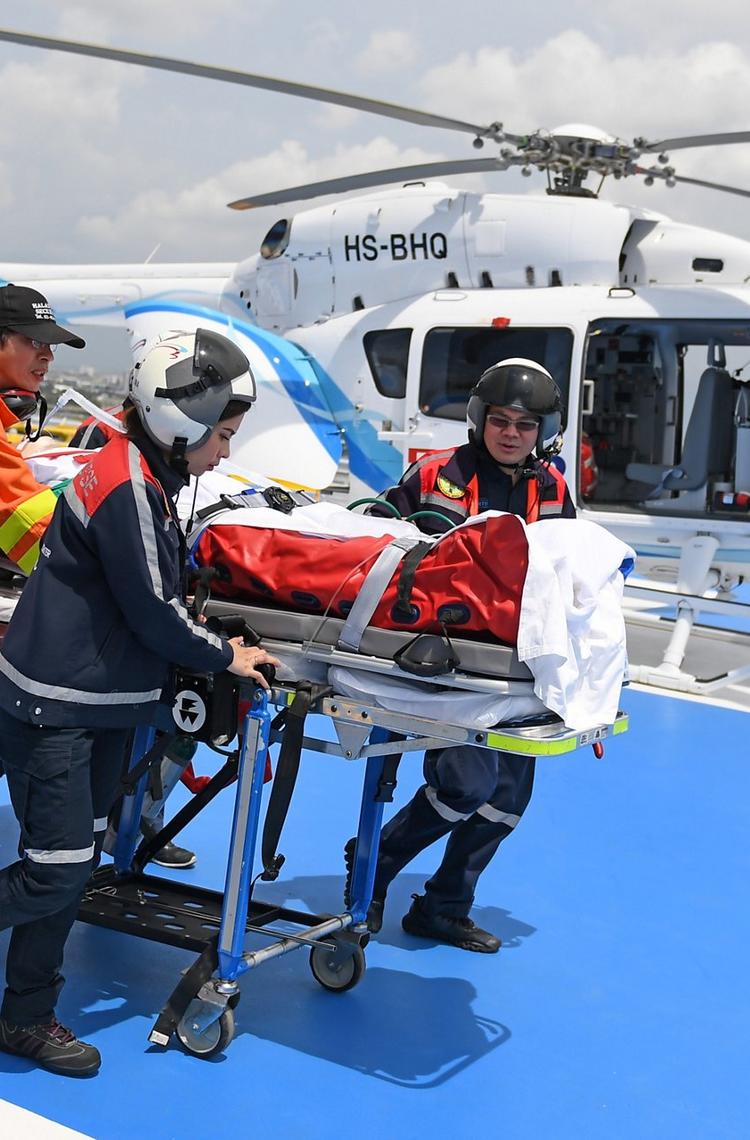Helicopter emergency medical services are gaining momentum around the world, particularly in Asia, where a mix of airspace regulations, infrastructure, and funding created barriers to the sector’s growth. Several breakthroughs are opening the door to this critical industry.
Suffer an accident, get hurt while far from home . . . we all want our route to emergency care to be fast. In Asia, a variety of actors are working hard to make this the case. The need for helicopter EMS (HEMS) is there. In Europe and the US, an average of two helicopters per million people is considered adequate. . By this calculation China, with a population of 1.4 billion and just a handful of dedicated HEMS aircraft, could require 700 helicopters; India, with a slightly smaller population, is projected to require close to the same.
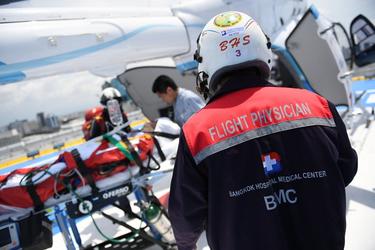
The regulation on low altitude air traffic in China is loosening. I believe the cooperation with Airbus Helicopters will benefit the people and allow us to save more lives.
- Chongyue Jia, Head of Air Medical Rescue Beijing 999
A shift towards acceptance
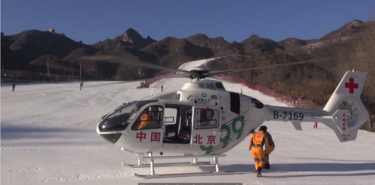
Several developments reflect the strides being made to meet this need. The Indian government adapted its airspace regulations in mid-2016 to allow the development of the HEMS market, which was the first time separate regulations were made for this market in the country. . It is an evolving effort – new recommendations were submitted most recently in January 2018 – and defines the requirements for equipment and avionics, the differing roles for twin and single engine aircraft, and operational concessions (whether a flight plan is needed, flight limitations at night, etc.).
In 2001, Japan’s EMS system began a shift toward a physician-driven approach with its Doctor-Heli programme. Doctor-Helis are EMS helicopters that enable doctors and nurses to fly to emergency sites quickly, catering to outlying areas and aging populations. The change was accompanied by investments in infrastructure, and training for crews and hospital staff. The programme now successfully serves more than 40 prefectures.
Since 2014, China has seen a relaxation of its military-controlled airspace. As a result, there has been a growth in helicopters being used for specialised segments. In 2014, Beijing 999 Emergency Rescue Centre (a Beijing Red Cross Foundation subsidiary) took delivery of an H135, in the process supplying China with its first HEMS-dedicated helicopter. “The regulation on low altitude air traffic in China is loosening. I believe the cooperation with Airbus Helicopters will benefit the people and allow us to save more lives.” says Chongyue Jia, Head of Air Medical Rescue Beijing 999.
The key challenge to develop our activity in EMS in Asia is to convince our operators of the viability of their business model.
- Pierre André, Airbus Helicopters Head of Sales Southeast Asia
A working business model
“The key challenge to develop our activity in EMS in Asia is to convince our operators of the viability of their business model,” says Pierre André, Airbus Helicopters Head of Sales Southeast Asia. Operators’ means of financing their business run the gamut, whether full government support is involved, as in Bhutan, or the cost is shared, as in Japan, where the annual 210 million-yen subsidy is borne 50:50 by the Ministry of Health, Labour and Welfare and by local government. Surf Life Saving Queensland has been providing SAR services on Australia’s coastline for 42 years, thanks to a mix of corporate and government funding; an Australian bank is their main sponsor.
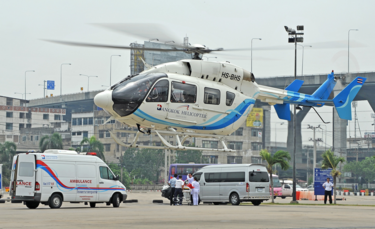
In Thailand, Bangkok Helicopter Services Company Ltd (BHS) manages its cost of operation by contracting with Bangkok Hospital to provide HEMS services using two H145s. “BHS has increased its capital to cover the investments in our new fleet and equipment, based on our confidence of future prospects,” says Kirati Kraipasit, Managing Director of BHS, which covers Thailand as well as Cambodia, Laos, and Myanmar.
BHS has increased its capital to cover the investments in our new fleet and equipment, based on our confidence of future prospects.
- Kirati Kraipasit, Managing Director of BHS
In India, Aviators Air Rescue funded by Air Medical Group Holding (AMGH), a US based company, introduced dedicated HEMS services in 2017 using three H130 helicopters. Turbo Aviation will follow-up with an H135 helicopter based in Hyderabad by the end of 2018. In 2019, the state of Maharashtra will also start operating HEMS missions with a brand new H145 helicopter. However, the policies adopted by the Directorate General of Civil Aviation (DGCA) in India are yet to be fully implemented. Support from state governments is essential in a country with 1.3 billion inhabitants and a need for more than 600 dedicated EMS helicopters.
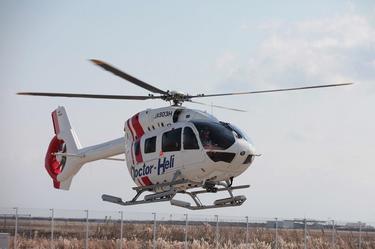
Unique challenges
Asia’s HEMS operators face other challenges. For years, the operators in Nepal have been performing some of the most dangerous rescue missions in the world. Every day, a fleet of almost 25 H125 helicopters soars above 20,000 feet, each aircraft flying more than eight hours. Thousands of lives are rescued every year because of the ability of the pilots and engineers to perform such critical missions. Two H130s have been introduced by Royal Bhutan Helicopter Services (RBHS) in Bhutan to perform in a similar environment.
One of the challenges particular to Japan is its pool of experienced pilots: the 2,000 flight-hour minimum requirement for pilots has recently been moderated to 1,000 hours for captains in response. “Japan’s lack of younger pilots might affect the growth of this segment, since over two-thirds of EMS pilots are over 50 years old,” says Olivier Tiller, Managing Director of Airbus Helicopters Japan.
Several aircraft have been meeting the needs of these challenges. In Japan, where twin-engine aircraft are a prerequisite, Hirata Gakuen will be entering the country’s first H145 into service in Nagasaki prefecture in June 2018. In Nepal, the single-engine H125 serves almost 80% of the civil market, as one of the helicopters the most capable of reliable search and rescue performance at high altitudes. For Queensland’s coastal rescues, the H135 is an agile platform. “Our missions are far more dynamic than a typical winch rescue,” says Paul Gibson, Surf Life Saving Queensland chief pilot. “If we see someone in distress, we have to turn the H135 around quickly and be ready to effect an immediate winch.”
A region of firsts
Challenges notwithstanding, the region’s HEMS industry is gaining momentum. In Asia Pacific at the end of 2015, 202 helicopters flew dedicated EMS missions, triple the number just a decade earlier*. In Japan, some 20,000 HEMS missions were flown in 2013; by 2016, it had reached 25,000 and continues to grow.
Asian operators are stepping up to fill the gaps. BHS in Thailand has been operating medical flights since 2007 with an H145. Becoming the first operator in Southeast Asia to receive an EMS-configured H145 means BHS can perform night flights and those needing IFR clearance. “We expect to see our company placed in a more vital role of the healthcare business,” says Kraipasit.
In China, seeing its operations expand, Beijing 999 signed for an H145 in 2017 to complement its fleet of two H135s and one H145. The H145 is the first of its kind to be configured with a rescue hoist, which will be used for mountain rescues during the 2022 Olympics in Beijing. In Shandong province, China’s second-most populous province, HEMS999 (a subsidiary of MIT Group) operates six H130 helicopters against a growing need for highway accident EMS.
India’s first dedicated HEMS operations began in 2017 with Aviators Air Rescue, which has been operating three EMS-equipped H130s, and will shortly receive an H135. “A recent event highlighted the value of having helicopters for EMS missions,” says Arun Sharma, Managing Director, Aviators Air Rescue. “We got a call to move a heart from one hospital to another, an intercity flight, which was done for the first time in Bangalore. It took only seven minutes to move that heart from one place to another, while by ambulance it would have taken them an hour and a half in the city during peak hours.”
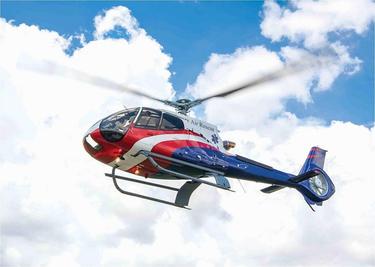
Paving the way for the future
Taking the sector’s growth into its own hands, China signed a framework agreement with Airbus Helicopters in 2016 to build an H135 final assembly line in Qingdao, for 100 H135s over ten years. “The potential for EMS in China is big,” says Marie-Agnès Veve, Head of North Asia region and managing director of Airbus Helicopters China. “We are developing the H135 with a Chinese partner in part to meet the needs of the HEMS segment.”
HEMS’ success in the coming years will rest on proof-of-concept, through the efforts of pioneers like Aviators, BHS, and Beijing 999; and on educating both authorities and the public on its viability.
*source: Flightglobal Fleets Analyzer whitepaper - 2016
